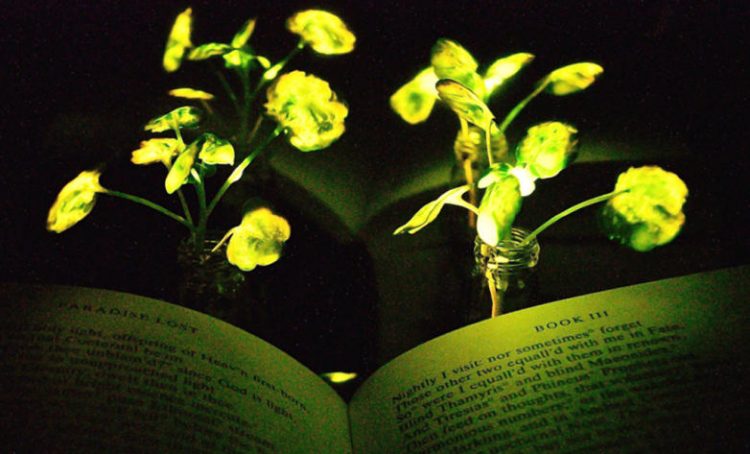MIT researchers have made an important breakthrough in their quest to make plants that glow in the dark a reality. In what they call Plant Nanobionics, the engineers embedded nanoparticles into the leaves of a watercress plant that caused the plants to give off a dim glow for three and a half hours.
Their next goal is to create plants bright enough to illuminate a workspace, but, if successful, the technology could also be used to transform trees into self-powered streetlights, the scientists claim. The team’s ultimate goal is to engineer plants to replace many of the functions currently performed by electrical devices and appliances.
“The vision is to make a plant that will function as a desk lamp — a lamp that you don’t have to plug in. The light is ultimately powered by the energy metabolism of the plant itself,” said Michael Strano, the Carbon P. Dubbs Professor of Chemical Engineering at MIT and the senior author of a recently released study on plant nanobionics.





















